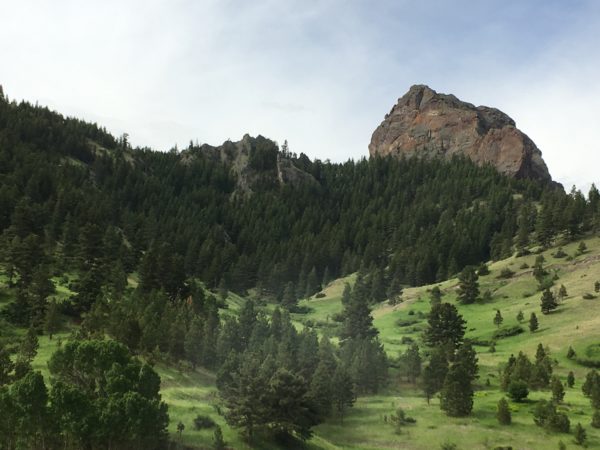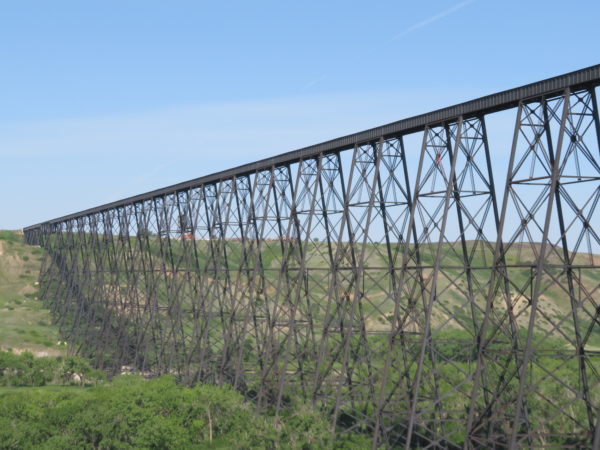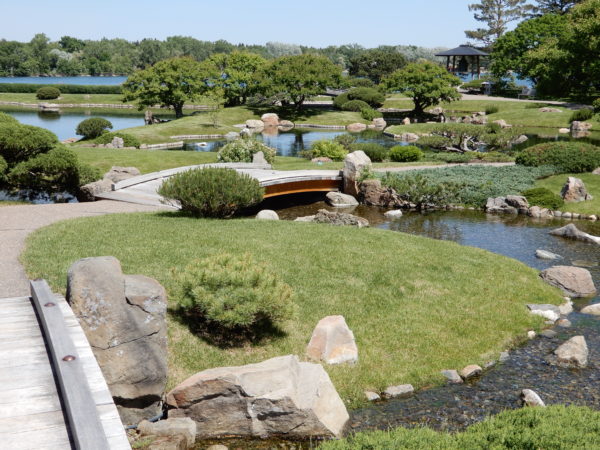June 7-8, 2018
The drive from Billings, Montana to Lethbridge, Alberta was eventful. First, before we crossed the border into Canada, a passing truck threw a rock at the windshield and the windshield developed a spider-like crack. This was Jane’s first experience with a cracked windshield and she remembered TV commercials urging prompt repair of windshield damage, lest dire things happen. Jane needed no help imagining dire things, chief among them the collapse of the coach’s windshield–all 32 square feet of it. [She soon learned not to sweat the smaller stuff, but that’s another post.]

The quarter-sized spider crack is circled. [The Jeep is parked in front of the coach but doesn’t have anything to do with this photo.]



We spent about an hour getting through the line at Customs. We were lucky we were going slowly and someone signaled us that the tailgate on the Jeep had come open. We still haven’t figured that one out!

Our hour long wait to clear Canadian Customs.
Lethbridge, Alberta with a population of about 100,000 is the largest city in southern Alberta. Now a commercial, financial, transportation and industrial center; the city’s economy developed from drift mining for coal in the 19th century and agriculture in the early 20th century. The city’s founding was a bit unusual. After the US Army stopped alcohol trading with the Blackfeet Nation in Montana in 1869 two traders, John Healy and Alfred Hamilton started a whiskey trading post called Fort Hamilton, the future site of Lethbridge. The Fort became known as Fort Whoop-Up and is now a museum.

Nicholas Sheran accompanied Healy and Hamilton to capitalize on the illicit whiskey trade. The whiskey trade led to the Cypress Hills Massacre of many native Indians which caused the North-West Mounted Police to stop the trade and take over the Fort. When the whiskey trade ended Sheran set up a ferry service across the Oldman River near Fort Whoop-Up. As he crossed back and forth on the river he noticed a seam of coal on the river valley wall. He started a small coal mining business in 1874 and quarried coal from this seam until he drowned in the river in 1882.


In 1882 the North Western Coal and Navigation Company began mining the coal seams. North Western’s president was William Lethbridge, from whom the city derives its name. The first rail line to Lethbridge was opened in 1885 by the Alberta Railway and Coal Company. The rail industry’s dependence on coal boosted the local economy and brought immigrants to the mines and farmers to the prairies. The rail lines continued to push west and the Lethbridge Viaduct, commonly known as the High Level Bridge was built across the river in 1909. It is the highest and longest steel trestle bridge in the world.





The bridge is 307 feet high and 5327 feet long.

The bridge crosses over the original coal seam and is adjacent to the Helen Schuler Nature Center where we had a pleasant time exploring exhibits and touring the nature trail along the river.


Can’t ever learn enough about poop.


Hand knitted and crocheted stools made to resemble tree stumps.

Exploring the banks of the Oldman River on the nature walk.
Nikka Yuko Japanese Gardens
These gardens in south Lethbridge opened in 1967 as part of a Canadian centennial celebration and was attended by Japan’s Prince and Princess Takamatsu. Our tour guide was a charming local young woman dressed in Japanese attire.








Before we left Lethbridge Dave visited a geocache hidden in a wishing well in the cache owner’s front yard. She came out to greet him and share stories.





1 Comment
Wilfred Brimley · July 13, 2018 at 3:28 pm
Great post. I would like to see that bridge.